

- Vol. 43 Trial lessons. What teaching materials do you recommend?
- Vol.66 New Penmanship:How do I insert underlines?
- Vol.65 How can I use a purchased "Student CD App" with a new device?
- Vol.64 Handwriting for Book 2 or Book 3?
- Vol.63 What color of Reward Stickers should I give to my student?
- Vol.62 What Picture books are suitable for lessons with BLUE textbook?
- Vol.61 What picture books are suitable for lessons with YELLOW textbook?
- Vol. 60 Is YELLOW textbook too easy for 1st grade Elementary school student?
- Vol.59 Can you print “Lined Worksheet Wizard” in black and white setting and print the words in light gray?
- Vol.58 Can I import pictures into New Flash Card Maker?
- Vol.57 Do you have other materials that includes “*** stories” and “stroke orders” which is in the notebook (8-lines)?
- Vol.56 What is the difference between 1st edition of Tomorrow and Book5 TOMORROW(2nd edition)?
Vol. 43 Trial lessons. What teaching materials do you recommend?
Let’s take a look at some popular activities that children who have no experience of English can enjoy from the very beginning.
『Let’s Make a Face』(Target 3-10 year olds)
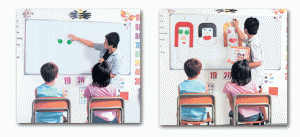
This is an activity in which the children choose their own face parts of different sizes, lengths, and colors to make a face.
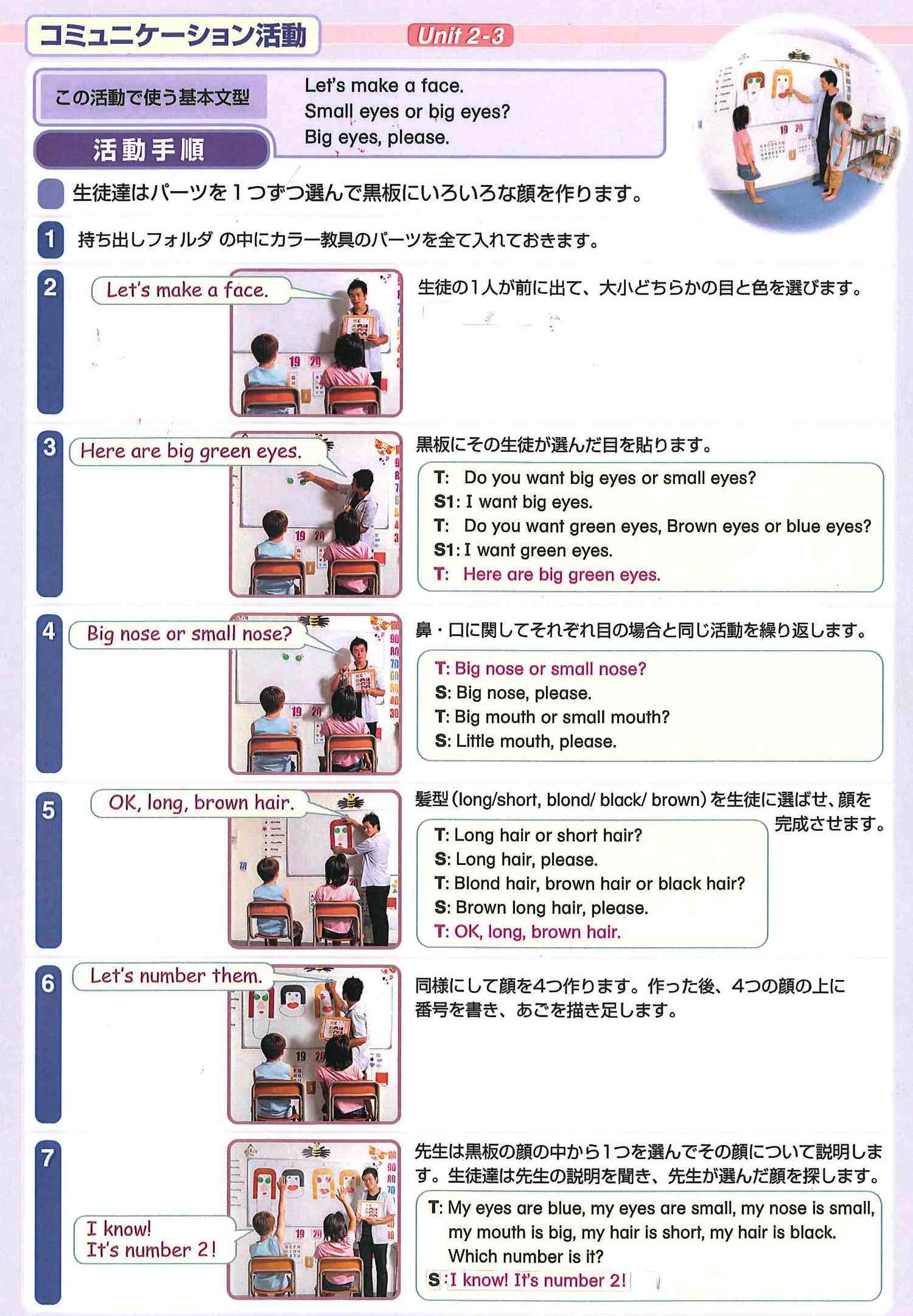
(From Teacher’s Manual English /Please click to enlarge.)
Using teaching tools, the children have fun making three or four faces on the board. The faces are numbered from left to right as 1, 2, 3 and the teacher chooses one of the faces and explains about it in English. The children listen hard to the English and can guess the face chosen by the teacher because they made it themselves.
After the activity, recite the lesson’s target English (in this case, the face part) in CHANT: Let’s Make a Face in a fun way. After the lesson, talk to parents about the lesson’s objectives.
CHANT: Let’s Make a Face (Easy recite chants!)
♪Let’s make a face. A happy happy face. Eyes, a nose, and a mouth. (sad/ angry/ funny)
【Objective of the lesson】
- The importance of communicating one’s intentions in English
- The importance of creative activities that do not have pre-determined answers in language activities
- Listening should be able to be done if there is a purpose
- The importance of reciting target vocabulary and sentences in chants in a fun way
- Importance of knowing that there are people with different colored eyes and hair all over the world.
While you are talking to parents, you can ask children to draw a face of their own inspiration.
(Materials used: Learning World Book 1 Activity Sheets 90/Learning World 1 NEW Teacher’s Manual CD-ROM【3rd Edition】)
Detailed instructions on how to teach are given on Learning World 1 NEW Teacher’s Manual CD-ROM【3rd Edition】.
■The actual guidance document can be found here.⇒⇒LW1TB_U2_3
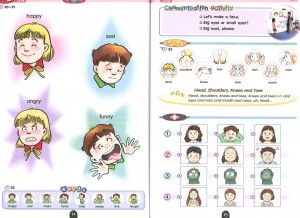
Let’s Make a Face activities are based on Learning World Book 1.
Material to use:
Colour KYOGU No. 31 Let’s Make a Face ⇒⇒Click here to buy.
*If you are already using Learning World Book 1, you do not need to purchase the color teaching tools. Let’s Make a Face teaching tools are included in ACTIVITY SHEETS 90!
Vol.64 Handwriting for Book 2 or Book 3?
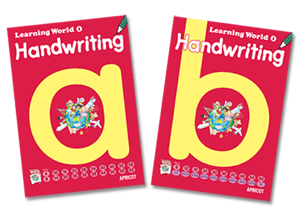
1 ”WELCOME to Learning World”(PINK, YELLOW, BLUE) will build vocabulary and basic expression.
2 At the beginning of “Book 1”, start tracing and writing. Getting used to writing will guide to word familiarity.
For learners of “Book 2” or “Book 3”, students already have 5 or 6 years of experience. At this stage they write sentences and words in a notebook, instead of tracing.
★Notebook 10 lines (Blue)
https://www.apricot-plaza.co.jp/products/60140
★Notebook 13 lines (Purple)
https://www.apricot-plaza.co.jp/en/products/60150
Although we recommend to use a notebook for “Books 2” learners, we have been receiving requests for Tracing “Workbook for Book 2” or “READY for Learning World”. We may publish them in the future depending on the requests and the needs.
*”Book” 1 also has a Workbook and adding Handwriting for homework might be too much? – Not quite! A school tried using “Handwriting” and “Workbook” homework (in “Book 1” class with 300 students in total) for one year and received positive feedback from parents.
Vol.56 What is the difference between 1st edition of Tomorrow and Book5 TOMORROW(2nd edition)?
We also revised the pages on the right. Listening Test page on each unit has been changed and now there are not only Creating Writing but Presentation drafts and activities of “Think and find own answers” here and there. Other than that, we added three grammatical subjects which used to be taught in high schools such as Past subjunctive, Present Perfect Continuous and Participles.
For the workbook, there are demo tests for level 3 Eiken qualification and past exam questions from Cambridge (YLE) Movers in addition.
In the teacher’s book, it has an additional Mini Test for each unit which you can make photo copies to suit your needs.It has more contents and it is higher degree level compared to the 1st edition. The book is recommended for students who have learned Learning World Book 3 and Book 4 BRIDGE.
Mini Test <click the image to enlarge>
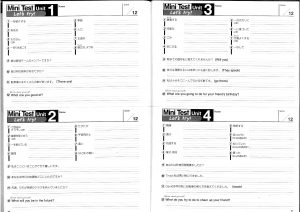
■TOMORROW(2nd edition) target :
From upper grades of elementary to junior-high who has been learning English since pre-school or lower grades of elementary. It is also possible to use the 2nd edition after they studied the 1st edition. Students can review what they have learned in the previous year and understand more deeply.
Vol.53 YELLOW and BLUE are composed of songs and chants, they seem like a short course.
The short dialogues in each unit are useful in different situations. Whenever there is a chance to use the dialog, students should review and repeat the line so they can use the sentence naturally. The list below is some lines from WELCOME YELLOW and BLUE. There are so many dialogues that can be used in the classroom or on a daily basis, use the lines they have learned as much as possible. Teachers should give students various situation and lead the dialogue so they can follow.
□Are you ready? OK. □Whose turn? It’s my turn.
□Here you are. Thank you. You’re welcome. □What is …’s name?
□I like… How about you? □Whose …it this? It’s mine.
□Let’s… That sounds good! □Do you have…? Yes, I do. I have…
□Do you like…? □Where do you live?
□Are you hungry? □Watch out!
□How is the weather? □I’m finished! Show me. Good job.
□Listen to me. We are listening! □Can I have a bite?
□May I come in? Yes, you may. □How did you come here? By….
□Here’s some … □What do you want? I want …
□Open the…. Sure!
Vol. 51 Activity area on the right hand side of Learning World takes a long time to see the result.
Training them for Eiken qualification allows students to pass the exam as their knowledge improves with the chants. However they still need continuous activities to get to the point where they can explain what they want to say. It is one of the most important contents for English education. Please do not skip the activities and spend 15-20 minutes on them.




















